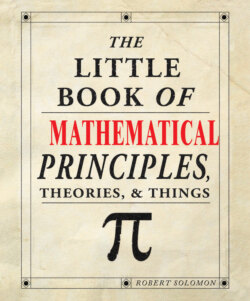Читать книгу The Little Book of Mathematical Principles, Theories & Things - Robert Solomon - Страница 14
На сайте Литреса книга снята с продажи.
6th century BC Greece Irrational Numbers
ОглавлениеAn irrational number cannot be expressed as the ratio of two whole numbers. Many numbers, such as √2, the square root of √ are irrational.
_______________
The Pythagoreans thought that everything could be explained in terms of whole numbers and their ratios – fractions, in other words. It was a great shock when it was shown that this is not true.
Take a right-angled triangle in which the two shorter sides each have a length of one unit. According to Pythagoras’s theorem, the length of the hypotenuse h is given by h2 = 12 + 12. So h2 is 2, and hence h itself is √2, the square root of 2. This number is not the ratio of two whole numbers, and hence is an irrational number.
The proof is the earliest example of a “proof by contradiction.” It assumes that √2 is a rational number, i.e. that √2 = a/b, where a and b are whole numbers, and derives a contradiction.
This proof is one of the most important in the history of ideas. It destroyed the notion that everything could be described in terms of whole numbers. The actual person who made the discovery remains unnamed but his fellow Pythagoreans were so appalled by his impudence that they drowned him in the Aegean Sea.
See: The Pythagoreans, page 17
